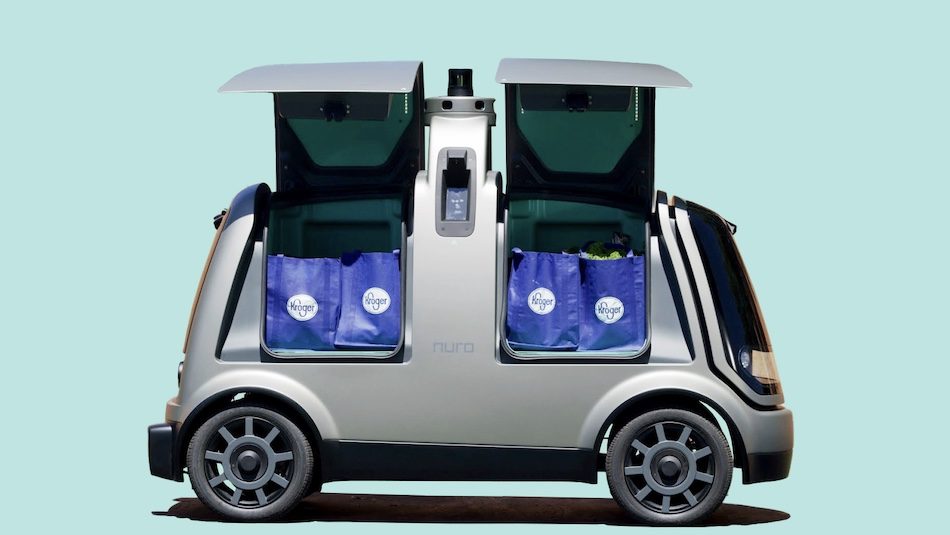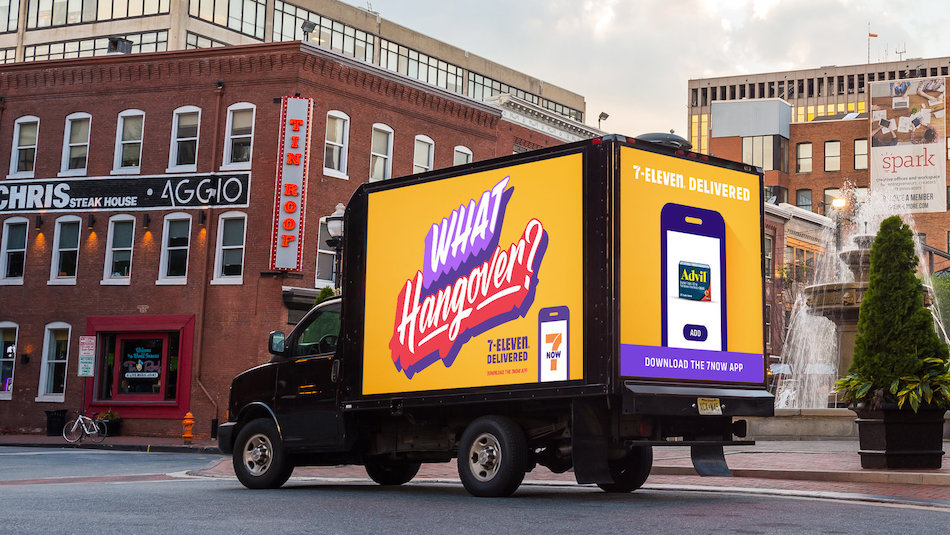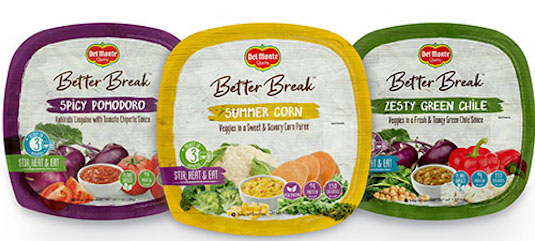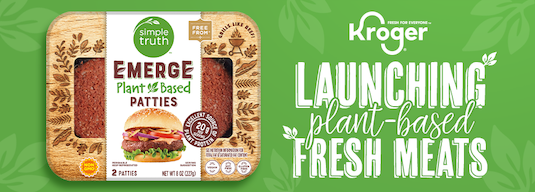
Grocers Take Drastic Measures in Effort to Gain Consumer Approval
Supermarket operators are trying tactics to satisfy their customers in ways that even just a few short years ago would have been unthinkable. A store where you just pick up your choices and walk out – with no checkout and no scanning?
This model, Amazon Go, is being tested by any number of chains. As is the Amazon Prime subscription model for home delivery. And rumors are, Walmart is about to jump on this in a big way. Technology is allowing many of these advances, and Amazon is adding pressure, but the recognition that retailers must do whatever is necessary to keep their customers happy (or suffer the dire consequences) is also driving this trend.
Grocers are Testing Programs for Customer Approval
The food retail climate reminds me of a story I recently read. A town tested three different versions of those flashing signs that tell you what your speed is compared to the speed limit. The first one just showed the driver’s speed. The second one said ‘Slow Down’ if the driver was over the speed limit. The third took a different approach. It showed a green thumb s up if the driver was under the speed limit and a red thumbs down if the speed limit was being exceeded. Results showed the last approach was by far the most successful in getting drivers to comply. Turns out, everyone wants to get a pat on the back and supermarket operators are no different.
s up if the driver was under the speed limit and a red thumbs down if the speed limit was being exceeded. Results showed the last approach was by far the most successful in getting drivers to comply. Turns out, everyone wants to get a pat on the back and supermarket operators are no different.
Operators are jumping through hoops right now to get a thumbs up from consumers. Two areas where they are seeking consumer approval often conflict with each other. Let’s call one bucket ‘ease of shopping,’ which includes home delivery, in-store pick up, cashierless checkout, grab-and-go snacks and meals, new locations, and a number of other innovations. The second bucket is ‘social responsibility,’ which includes sustainability, healthy eating, and reduced waste and pollution – this is where the conflict with ‘ease of shopping’ comes up. It’s hard to reduce pollution when you are driving around all day and delivering groceries that consumers used to pick up in store on their way home. And the extra packaging generated by home delivery –especially of prepared foods –is equally concerning.
But consumers aren’t necessarily logical, and grocers must do what they can to please their customers –or somebody else will. While these two buckets are by no means the only areas where consumer demands are being met, the following illustrates the efforts retailers are willing to put toward getting a thumbs up from their customers.
Latest Technology Being Tested at Retail to Make Consumers’ Shopping Easier
Walmart introduced Voice Order, which allows customers to add orders to their online shopping cart verbally via Siri by partnering with Apple. Once customers have paired their accounts, they can build an order by just saying “Add to Walmart.” Customers’ preferences will be automatically remembered. For example, if they prefer orange juice with pulp, the second time they order they can just say orange juice – they won’t have to specify pulp.
Kroger has expanded the test of their tie-in with Walgreens and their Kroger Express store-within-a-store concept. The Walgreens stores carry as many as 2,700 Kroger items, including their Simple Truth private label line and Home Chef meal kits as well as fresh, frozen and shelf-stable selections. The Walgreens stores also act as additional pickup locations for customers using Kroger’s click-and-collect service. Walgreens’ private label items, in turn, will be available at some Kroger stores.
Hy-Vee has acquired four QuickTrip convenience stores and converted them into their Fast & Fresh Express convenience store banners. The Hy-Vee-owned format offers consumers the convenience of quick and easy trips with more fresh fruits and vegetables available than the typical convenience store, along with grab-and-go value-added prepared produce.
Amazon Fresh expanded into Houston, Minneapolis and Phoenix. Prime members can get their groceries delivered within two hours of ordering. 7-Eleven continues to introduce more convenient options for customers. They are piloting a cashierless store (currently only for employees) at their headquarters in Irving, Texas. They also have several locations testing Mobile checkout with a smartphone app and are in the delivery game with 7Now.
7-Eleven continues to introduce more convenient options for customers. They are piloting a cashierless store (currently only for employees) at their headquarters in Irving, Texas. They also have several locations testing Mobile checkout with a smartphone app and are in the delivery game with 7Now.
HEB has found an innovative way to overcome its lack of brick and mortar stores in Dallas by partnering with Instacart to deliver groceries – even though the nearest HEB is 20 miles away.
Starbucks is testing ‘pickup’ only stores, so they can tuck them into spots where a full-size store might not fit. The stores also are being used to supplement a densely populated area that has full serve Starbucks nearby. You can’t order anything in these stores; you have to use the app on your phone and just grab your order when you get there. No comfy chairs or hanging out on your computer at these Starbucks either.
Walmart has expanded its Delivery Unlimited program to more than half the country. This option allows consumers to get as many deliveries as they like for a flat $12.95 monthly fee.
DoorDash and Postmates, which started out delivering meals from restaurants, are now getting in to the grocery delivery game.
Uber recently acquired majority ownership of Cornershop, thus taking a major leap into grocery delivery.
Meanwhile Kroger is going in the other direction, using dark kitchens to prepare restaurant meals and deliver them to customers via their Kroger Delivery Kitchen program (a partnership with ClusterTruck).
Ahold is testing a small-format store called Lunchbox. Customers scan the app on their phone on the way in, then just exit the store when they have their groceries. Cameras and digital technologies do the rest. Ahold reports that the stores can be up and running in just six weeks.
Smart & Final recently upped their technology to allow customers to view their ad circular online and immediately add items to their shopping cart. Shoppable recipes add convenience, and customers can build and save customized shopping lists. The new platform also allows customers to manage their payment options and shopping history. The site will also offer suggestions based on previous purchases. Delivery via Shipt is usually within two hours of purchase.
Recent Social Responsibility Initiatives in the Supermarket Space
Publix has committed to donating $2 billion worth of food to food banks in their trading areas over the next 10 years. Instead of non-salable food being added to waste, associates gather foods at the end of each day to donate to Feeding America’s network of food banks.
Meijer is piloting a new app that allows customers to buy fresh food that is nearing its ‘best by’ date at up to 50% off. Shoppers pick up the food in store once they’ve ordered it through the app. Meijer partnered with Flashfood to test the program, which helps customers get affordable fresh food while reducing waste.
General Mills announced that they had met their goal of reducing sodium content in their products in 10 categories by 20%, a goal set in 2010. The salt reduction was achieved by replacing salt with other spices or in some cases using less salt but putting it on the outside of the food item so the salt flavor was more readily noticed.They stated that at the same time they have increased the nutrient density of their products with added whole grains, fiber, vitamins and minerals.
Tyson Foods announced in late January that it had created the Coalition for Global Protein to identify and implement solutions to sustainably feed the world’s growing population and address issues like food waste and conservation.
 Del Monte just launched a line called Better Break, which targets millennials with healthy products that are in a convenient heat-and-eat format. These products are geared to lunch or snack occasions. They combine the convenience of 3-minute prep with vegetarian health benefits.
Del Monte just launched a line called Better Break, which targets millennials with healthy products that are in a convenient heat-and-eat format. These products are geared to lunch or snack occasions. They combine the convenience of 3-minute prep with vegetarian health benefits.
 Plant-Based and Meat Alternative Offerings Provide Both Health and Environmental Benefits
Plant-Based and Meat Alternative Offerings Provide Both Health and Environmental Benefits
The trend toward reduced meat consumption is gathering strength. The health advantages perceived in reduced meat consumption are reinforced by the growing awareness that fruit and vegetable production has lower environmental impact than meat. (For instance, it takes 25 times as much water to produce a pound of beef than it takes to produce a pound of avocado.) Capitalizing on this, Nestle is adding plant-based items to its DiGiorno and Stouffer’s lines and has already launched its Awesome Burger plant-based patty. Kroger added Emerge Plant-Based Fresh Meats to its Simple Truth line. And in January Kroger stated that they would introduce 50 Emerge plant-based items this year. They also announced a partnership with Infarm to grow produce hydroponically at the store level. This reduces environmental impact by eliminating transportation and also provides the freshest possible produce (talk about locally sourced!). Albertsons recently revamped its private label frozen food line to introduce 55 new items ranging from organics to meatless patties to plant-based frozen bowls, developed with the Plant-Based Foods Association.
Supermarkets, Choose Your Consumer Response: Thumbs Up or Thumbs Down?
Given all this activity, it is harder and harder for food manufacturers to stand out in the crowd. But there is no doubt that they must be prepared to innovate like never before to give consumers what they want. This means product offerings need to be healthier without giving up flavor, meatless and plant-forward options must be included and a sustainability message is clearly presented to consumers.
If that wasn’t enough, manufacturers need to consider that new distribution points (C-store, drug store, curbside pick-up, dark kitchen) keep emerging and need to be exploited. But if they manage to achieve all this, they will definitely get a thumbs up from their customers.





